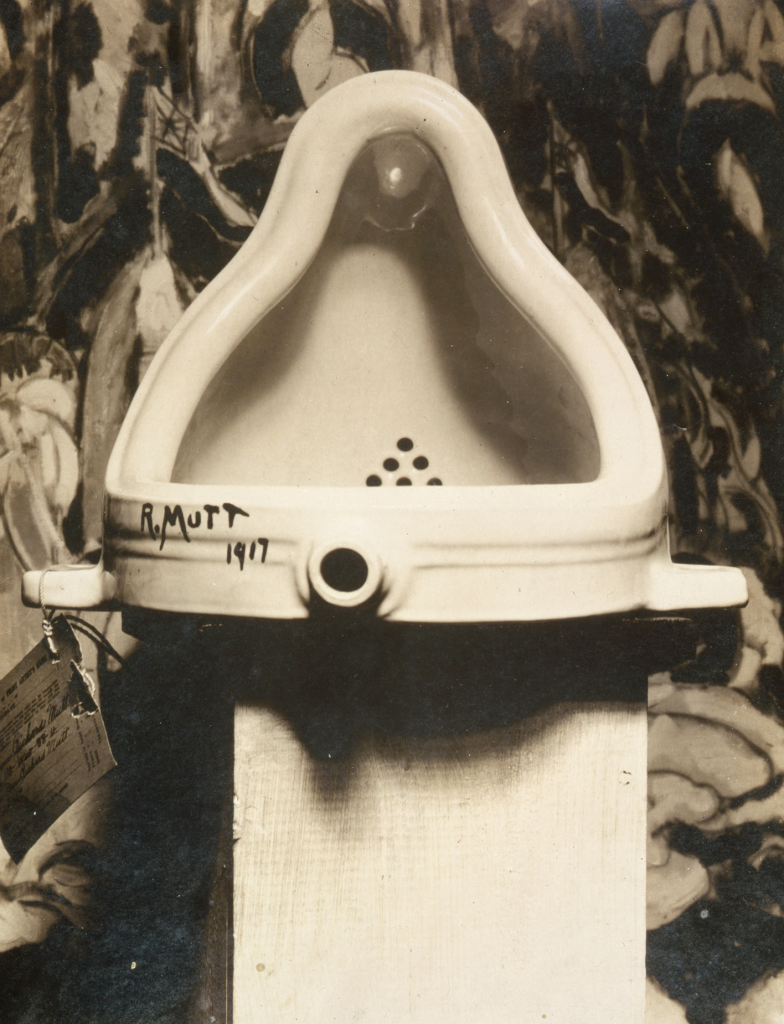
Industrial art began as the use of mechanical devices to create artworks. As such it is also known as mechanical art. I use it in a slightly different context to refer to industrially made objects that have an attractive appearance. Some people may enjoy watching this history of industrial design, to provide a conventional story of how it evolved.
For me, the most enlightening book about industrialism has been written by Terje Tvedt (1951 -) a professor of geography at the University of Bergen, Historiens Hjul og Vannets Makt: Da England og Europa Vant og Kina og Asia Tapte (2023). This could be translated as: The Wheel of History and the Power of Water: When England and Europe Won and China and Asia Lost. Tvedt has also written a book in Norwegian prior to that, Verdens historie: med fortiden som speil (2020), that I translate as World History: with the past as a mirror, which could have been published in English as Water and Society: Changing Perceptions of Societal and Historical Development (2021). I have not seen this English book, so there is some uncertainty.
In the 2023 book, the most important source of power was water, using a water wheel. England was able to develop this because it had stable rainfall, along with a relatively flat geography. These contributed to the use of canals to distribute industrially produced products. Later, steam became an increasingly important source of power. Now, it is electricity.
One starting point for industrial art is the Dada movement. Dada was an early 20th century art movement, arguably first at the Cabaret Voltaire in 1916 in Zürich, Switzerland, founded by Hugo Ball (1886 – 1927) and Emmy Hennings (1885 – 1948). Dada also emerged at about the same time in Berlin and New York, but later in Paris. It flourished until the mid 1920s.
Dada was primarily a reaction to the first World War, involving artists rejecting the aesthetics of modern capitalism. Instead they incorporated nonsense, irrationality and protest into their works. Performance art, was especially important, but gradually it incorporated visual, literary and sound media, including collage, sound poetry, cut-up writing and sculpture. There was a strong dislike of violence, war, nationalism and party politics.
There is a lot of speculation, but no consensus, on the origin of the name Dada. An unlikely story is that Richard Huelsenbeck (1892 – 1974) slid a paper knife randomly into a dictionary, where it landed on dada (French) = hobby horse.
Other unconventional art schools emerged at about the same time: Marcel Duchamp (1887 – 1968) around 1913 has been described as dada, avant-garde and post-impressionist. I attribute his work, Fountain (1917), photographed by Alfred Stieglitz (1864 – 1946), as one of the first pieces of industrial production, to be labelled a work of art.
Dada is important for its rejection of the correlation between words and their meaning. In much the same way, industrial art rejected the correlation of a work’s origin (as a utilitarian object) and its resurrection as a work of art.
Not all Dada movement members worked with industrial art, those who approached in other ways include: Jean Arp (1886 – 1966) known as a sculptor, painter and poet; Johannes Baader (1875 – 1955), an architect and metalworker, known as the Dada crowbar; Max Ernst (1891 – 1976), especially for frottage = pencil rubbings of textured objects and relief surfaces to create images; Elsa von Freytag-Loringhoven née Else Hildegard Plötz (1874 – 1927), especially for her anti-patriarchal activism; George Grosz, his de-Germanized name, born Georg Ehrenfried Groß (1893 – 1959), especially for his painting Eclipse of the Sun (1926), depicting headless government ministers who cannot think for themselves, but obey the commands of the capitalists and the military; Raoul Hausmann (1886 – 1971), who regarded destruction as an act of creation; John Heartfield born Helmut Herzfelt (1891 – 1968) who pioneered the use of photomontages, especially for making anti-Nazi and anti-fascist statements; Hannah Höch (1889 – 1978), especially known for co-inventing photo-montages, and for her dismantling of the fable of the New Woman: energetic, professional, androgynous, ready to take her place as man’s equal; Francis Picabia (1879–1953) avant-garde painter, writer, filmmaker, magazine publisher, poet and typographist; Man Ray = Emmanuel Radnitzky (1890 – 1976) an American in Paris, known for his photographs, especially photograms that he called rayograms = photographic images made without a camera by placing objects directly onto the surface of a light-sensitive material such as photographic paper and then exposing it to light; Hans Richter (1888 – 1976) painter, graphic artist, film producer and author of the book Dadaism (1965) about its history; Kurt Schwitters (1887 – 1948) especially noted for working as a draftsperson that influenced his later work, inspiring him to depict machines as metaphors of human activity; Sophie Taeuber-Arp (1889 – 1943) painter, sculptor, textile designer, furniture and interior designer, architect, and dancer;Tristan Tzara (1896–1963) essayist, performance artist, journalist, playwright, literary and art critic, composer and film director; and Beatrice Wood (1893 – 1998) ceramicist an sculptor.
The key to industrial art is the process of creating new forms by working with industrial materials, those that are produced at mass scale for everyday use. Many are made of metal, such as bolts and pipes. Wood is more problematic, because it is closer to nature. Cardboard, however, is one or two steps further away. Many claim that crap materials are even better, because they have completed their use as an industrial material and are freed to become an art form.
Charles Harrison Townsend (1851 – 1928) described industrial art as the use of materials and objects combined together in a way that creates new meaning. Not everyone appreciates this approach. Nikolaus Pevsner (1902 – 1983) in Pioneers of Modern Design (1949) referred to Townsend as reckless. Alastair Service (1933 – ) in Edwardian Architecture (1977) called Townsend a rogue architect.
Although it is difficult to define, many people have tried to categorize and define industrial art. In 1947, Larry Lankton created the first definition of industrial art when he referred to it as “an expression of the machine age.” While there are many different ways to interpret the term industrial art, it is generally agreed upon that it tends to incorporate aspects of modernism, specifically cubism and constructivism. According to wikipedia, in cubism, subjects are analyzed, broken up, and reassembled in an abstract form. Instead of depicting objects from a single perspective, the artist depicts the subject from multiple perspectives to represent the subject in a greater context. Similarly, constructivism was an early twentieth-century art movement founded in 1915 by Vladimir Tatlin (1885 – 1953) and Alexander Rodchenko (1891 – 1956) that is abstract and austere. Constructivist art aimed to reflect modern industrial society and urban space by rejecting decorative stylization, in favour of the industrial assemblage of materials. Constructivists were in favour of art for propaganda and social purposes. They were associated with Soviet socialism, the Bolsheviks and the Russian avant-garde.
For some time after its beginning, industrial art remained mostly an underground movement which encompassed various forms and styles from all over the world. In 1952, the Museum of Modern Art featured many works from this movement in a show called “Machine Art.” This exhibition moved from New York City to Los Angeles and San Francisco before finally closing in 1953.
Artists began using industrial materials for their work as early as the late 1800s with artists such as Marcel Duchamp who used glass as part of his ready-mades.
Today, industrial art can refer to two separate things. First, it can refer to any form of visual art that is made with found objects rather than manufactured ones. This umbrella term was coined by William Morris (1834 – 1896), for a wide variety of forms of modern art. It is closely associated with the Arts and Crafts Movement because both movements were heavily influenced by medieval craft guilds.
Some people site the major difference between industrial art and traditional fine art is the former’s focus on utilitarian products. Industrial artists work in a wide variety of media including ceramics, glass, leather, metals and textiles. Their works can be large sometimes even monumental in scale.
Louis Comfort Tiffany (1848 – 1933) is often cited as an inspiration for the movement, especially his use of stained glass in lamps, vases and windows. His designs were typically functional, yet beautiful.
Industrial art was a result of industrialization and the changes it brought. Many people, especially factory workers were profoundly unhappy with their situation. This forced artists to think about new ways to represent the world.
Industrial art was created by both amateur and professional artists. One of the first industrial art objects was designed was the door handle. These often used human, animal and plant elements in their design.
Found (or repurposed) objects were those that had been transformed from their original function into something else, preferably with an artistic element. Here, the artwork differed more in terms of its use of materials, rather than by its structure. Discarded materials were especially useful. Some cited examples include arranging tin cans in geometric patterns and repainting old tools/ machines with bright colors.
At some point, people interested in industrial art will be encouraged to reflect on the relationship between 1) the arts and crafts movement, 2) art nouveau/ jugendstil and 3) art that is created to be used in industrial settings. The focus is on objects that are to be seen by the public, usually inside a factory or store. It also includes graphics created for use as advertising and packaging. This type of art grew out of the Arts and Crafts movement of the 19th century, which was an effort to bring beauty into manufacturing. Industrial design, as an attempt to create beautiful things for use in industry, took off after World War I when many people were seeking a substitute for the ornate designs of Art Nouveau. The style became especially popular in America during the 1920s due to two trends: the rise in popularity of machines, and an emphasis on modernism.
A second perspective on industrial art = factory art = machine art, is a form of modern art that utilizes industrial materials and processes. Here, the term industrial art was coined in 1912 by the critic and artist Elie Nadelman (1882 – 1946), a sculptor and collector of folk art, used the term to describe some works by Alexander Archipenko (1887 – 1964).
Anno 2025, Industrial art is not a term that is used. Instead, the focus is on industrial design creating products that people want and, sometimes even need. It’s not just about making an object look good. It has to be easy to use, safe for the environment, affordable and durable.

